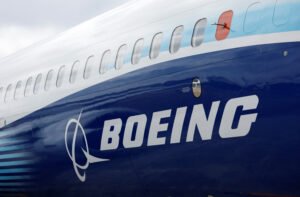As one of the largest airlines in the United States, American Airlines has a significant presence in the aviation industry. However, as with any organization, there are strengths and weaknesses that can impact its overall success. In this article, we will conduct a SWOT analysis of American Airlines to evaluate its internal and external factors that may affect its business strategy.
Jump Ahead To :
Tracing The Journey and Legacy Of American Airlines

American Airlines is one of the oldest and most iconic airlines in the world. It was founded on April 15, 1926, as a result of a merger between several small regional airlines. It’s initial focus was on air mail delivery services, but it quickly expanded into passenger transportation. American Airlines has played a major role in shaping the commercial aviation industry over the years.
In its early days, the airlines primarily operated in Texas and other parts of the southwestern United States. However, it soon began to expand its routes to other parts of the country, including New York City and Chicago. By World War II, American Airlines had become one of the largest airlines in the world and pioneered several key innovations that would help shape modern aviation practices.
Uncovering Strengths Of American Airlines
Brand Recognition and Reputation
American Airlines has been a staple of the aviation industry for decades, and one of its greatest strengths is its brand reputation and recognition. In a SWOT analysis of American Airlines, this aspect stands out as a significant advantage as airline’s logo featuring an eagle in flight is iconic, recognizable worldwide, and has become synonymous with air travel in America.
The company’s long-standing history also adds to its brand recognition. American Airlines was founded in 1926 and has since grown into one of the largest airlines globally. The airline’s reliability and consistent customer service have contributed to its positive reputation among travelers. Additionally, the company’s involvement in various community programs also positions it as a socially responsible organization that cares about giving back to society.
It’s brand recognition extends beyond just leisure travelers but also among business customers who value consistency and reliability when traveling frequently domestically or internationally.
Extensive Route Network
One of the key strengths of American Airlines is its extensive route network. With more than 6,700 daily flights to over 350 destinations in more than 50 countries, American Airlines has one of the largest route networks in the world. The airline operates hubs in major cities across the United States, including Dallas/Fort Worth, Chicago O’Hare, Miami International, Los Angeles International and New York’s John F. Kennedy.
This extensive route network allows American Airlines to offer a wide range of travel options to customers around the globe. Whether you’re traveling for business or pleasure, you can find a flight on American Airlines that fits your needs and schedule. Additionally, this strength enables American Airlines to compete effectively with other airlines by offering a comprehensive travel experience that includes convenient connections and access to major cities worldwide.

Fleet Modernization and Efficiency
The modernization of the fleet is one of American Airlines’ strengths, as it allows the company to operate more efficiently and cost-effectively. The airline has been investing in new aircraft models, such as the Boeing 787 Dreamliner and the Airbus A321neo, which offer better fuel efficiency and passenger comfort. This has helped American Airlines reduce its operating costs while also improving its environmental performance.
In a SWOT analysis of American Airlines, this strength is highlighted as a key advantage for the company over its competitors. By having a modern fleet, American Airlines can offer passengers a superior travel experience while also reducing its carbon footprint. Additionally, these new planes are equipped with advanced technology that enhances safety and reliability. Overall, the modernization of the fleet has allowed American Airlines to maintain its position as one of the leading airlines in North America while also ensuring long-term sustainability for the business.
Strong Alliances and Partnerships
American Airlines is known for its strategic alliances and partnerships, which have greatly contributed to the success of the company. Through these collaborations, American Airlines has managed to expand its reach and offer more travel options to customers worldwide.
One of the strengths of American Airlines is its partnership with Oneworld Alliance, a global airline alliance that brings together 14 leading airlines from various parts of the world. This partnership has enabled American Airlines to provide customers with access to over 1,000 destinations in more than 170 countries. Additionally, American Airlines has entered into codeshare agreements with other airlines such as British Airways and Japan Airlines, which have allowed it to expand its network even further.
Another strength of American Airlines’ partnerships can be seen through their cooperation with hotel chains like Marriott International and Hyatt Hotels. This collaboration allows passengers to earn frequent flier miles that can be used towards hotel stays.
Loyalty Programs and Customer Retention
Loyalty programs and customer retention are essential for any airline company to stay afloat in today’s competitive aviation industry. American Airlines understands this very well, which is why it has built a strong loyalty program that keeps its customers coming back for more. The company’s AAdvantage program is one of the most comprehensive and rewarding loyalty programs in the industry, offering customers various perks like priority boarding, free checked bags, and access to airport lounges.
American Airlines’ focus on customer retention has been a strength highlighted in their SWOT analysis. The airline has realized that retaining existing customers is less expensive than acquiring new ones – hence its commitment to providing exceptional customer service at all times. Through its loyalty program and other initiatives, American Airlines has been able to build a strong bond with its customers by making them feel valued and appreciated.
Examining The Weaknesses of American Airlines
High Operational Costs
One of the significant weaknesses of American Airlines is its high operational cost, which can be attributed to several factors. The company has a vast network that requires substantial investment in aircraft, technology, and personnel. Also, the airline industry is highly competitive and prone to disruptions such as fuel price hikes, economic downturns, and changes in regulations.
According to the SWOT analysis of American Airlines, high operational costs have resulted in lower profit margins compared to its competitors. To remain competitive, the company needs to find ways of reducing costs without compromising on quality or safety standards. For example, it can explore new routes with higher demand or invest in more fuel-efficient planes to reduce operating expenses over time. Additionally, American Airlines may consider streamlining its operations by adopting automation and digital solutions that improve efficiency while reducing labor costs.
Intense Competition in the Aviation Industry
The aviation industry is one of the most competitive industries in the world. It is characterized by intense competition among players, and American Airlines is no exception. The company has been facing tough competition from other airlines, both domestic and international. This intense competition is a weakness of American Airlines that needs to be addressed.
A SWOT analysis of American Airlines indicates that its main strengths include a large fleet size, extensive network coverage, and strong brand recognition. However, the airline also faces significant weaknesses such as intense competition in the industry, high operating costs, and a lack of differentiation from competitors. While these weaknesses are not unique to American Airlines, they do pose significant challenges to the company’s growth and profitability in an already crowded market.

Limited International Market Share
American Airlines is one of the most prominent airline companies in the United States and has a significant domestic market share. However, when it comes to international markets, American Airlines has limited reach compared to its competitors. This weakness is highlighted in a SWOT (Strengths, Weaknesses, Opportunities, and Threats) analysis of American Airlines.
Firstly, American Airlines faces stiff competition from other global carriers such as Emirates and British Airways that have established networks across several countries worldwide. Trying to penetrate these markets can prove challenging for American Airlines due to competition from established players with loyal customers.
Secondly, geographic restrictions such as landing rights agreements also limit American Airlines international market expansion efforts. These agreements prevent airlines from operating flights freely into certain countries or airports without getting approval first. As a result, it becomes incredibly difficult for airlines like American Airlines to expand their operations into new territories.
Historical Labor Disputes and Negative Publicity
Historical labor disputes and negative publicity have been a significant weakness for American Airlines. The airline has had several high-profile labor disputes with its employees over the years, which have often resulted in strikes and disruptions to flight schedules. These disputes have not only hurt the company’s bottom line but also eroded employee morale and customer confidence in the airline.
In addition to labor disputes, American Airlines has also faced negative publicity due to incidents such as passenger mistreatment, flight cancellations, and baggage mishandling. These incidents have generated widespread media coverage and damaged the company’s reputation among consumers. As a result of these weaknesses, American Airlines has struggled to maintain its market share in an increasingly competitive industry.
Overall, historical labor disputes and negative publicity continue to be a significant challenge for American Airlines. To address these issues, the company needs to focus on improving its relationships with employees through better communication and resolution of grievances.
Exploring The Opportunities for American Airlines
Growing Demand for Air Travel
As the world continues to recover from the COVID-19 pandemic, air travel is experiencing a surge in demand. The uptick in passengers presents a significant opportunity for American Airlines, which has been grappling with financial losses and reduced operations over the past year. With an extensive network of domestic and international routes, American Airlines could leverage this growing trend to strengthen its position in the market.
Expansion into Emerging Markets
One opportunity for American Airlines to overcome its challenges is by expanding into emerging markets. These markets offer great potential for growth due to their increasing middle class and rising disposable incomes. By establishing itself as a leader in these regions, American Airlines can tap into new revenue streams that will help it offset declining profits in more mature markets. Moreover, expansion into emerging markets can also help the airline mitigate the threats posed by rising fuel prices and global economic uncertainty.

Technological Advancements in Aviation
The aviation industry has undergone a tremendous transformation in recent years with technological advancements. This presents an opportunity for American Airlines to further enhance its market position and profitability. By leveraging these advancements, the company can gain a competitive edge over rivals, improve customer experience, and reduce operational costs.
A SWOT analysis of American Airlines reveals that technology is one of the strengths of the company. The airline has invested heavily in various technologies such as mobile apps, self-service kiosks, and online booking systems to make travel more convenient for customers. With emerging technologies like artificial intelligence , machine learning, and blockchain, American Airlines can create personalized experiences for passengers while optimizing operations. The use of AI-powered chatbots can offer 24/7 customer service support without human intervention. ML algorithms can predict flight delays or cancellations ahead of time so that passengers can be alerted before they even arrive at the airport.
Mapping Out Threats to American Airlines
Economic Factors and Market Volatility
The SWOT analysis of American Airlines reveals that economic factors and market volatility pose a significant threat to the company’s growth and profitability. The airline industry is highly sensitive to changes in the economy, including fluctuations in oil prices, inflation rates, and consumer spending patterns. Economic downturns can lead to reduced passenger demand for air travel, which ultimately results in lower revenue for airlines.
Market volatility also presents challenges for American Airlines as it affects the company’s ability to make accurate predictions about future business conditions. Unforeseen events such as natural disasters or geopolitical tensions can disrupt air travel patterns and cause significant financial losses. Additionally, increased competition from low-cost carriers has put pressure on American Airlines’ pricing strategies, further impacting its bottom line.
To mitigate these threats, American Airlines must focus on developing effective risk management strategies that account for potential economic disruptions and market fluctuations.
Fluctuating Fuel Prices and Environmental Concerns
As one of the largest airlines in the world, American Airlines has consistently faced challenges that have threatened its profitability. One of the most significant threats to the company is fluctuating fuel prices, which can affect its operational costs and reduce profit margins. With fuel being one of the most significant expenses for any airline, price fluctuations can significantly impact an airline’s bottom line.
In addition to rising and falling fuel prices, environmental concerns have also emerged as a critical threat to American Airlines. With increased public awareness about climate change and carbon emissions, airlines are now facing more pressure than ever before to reduce their environmental impact. Failure to address these concerns could lead to a loss of market share as consumers become increasingly conscious of their carbon footprint when choosing travel options.
Regulatory Changes and Government Policies
Regulatory changes and government policies have always been a crucial factor in the aviation industry. In the case of American Airlines, these policies can pose a significant threat to its operations. The recent changes in environmental regulations, cybersecurity laws, and trade agreements have forced American Airlines to review its business strategies continually.
A SWOT analysis of American Airlines reveals that strict regulatory policies can negatively impact its profitability. Compliance with environmental regulations such as emissions standards and noise pollution rules is costly for airlines. Moreover, trade restrictions imposed by governments can limit the airline’s access to new markets. This could hamper growth prospects for American Airlines and affect its market share.
Furthermore, government policies concerning immigration and travel bans can also hurt American Airlines operations. These restrictions could lead to lower demand for international flights or passengers canceling their reservations altogether. Such events would result in revenue losses for American Airlines and dent its market position.
Key Takeaways & Insights
In conclusion, American Airlines has strengths such as its extensive route network and strong brand recognition. However, the airline faces significant challenges including increasing competition and rising fuel costs. To address these challenges, American Airlines must focus on improving its operational efficiency and enhancing customer experience. By investing in technology and exploring new partnerships, the airline can stay ahead of the competition while ensuring that it delivers value to its customers. Overall, with a strategic approach and a willingness to adapt to changing market conditions, American Airlines can continue to thrive in the highly competitive airline industry. If you liked this analysis , do checkout the swot analysis we conducted on Fedex.






